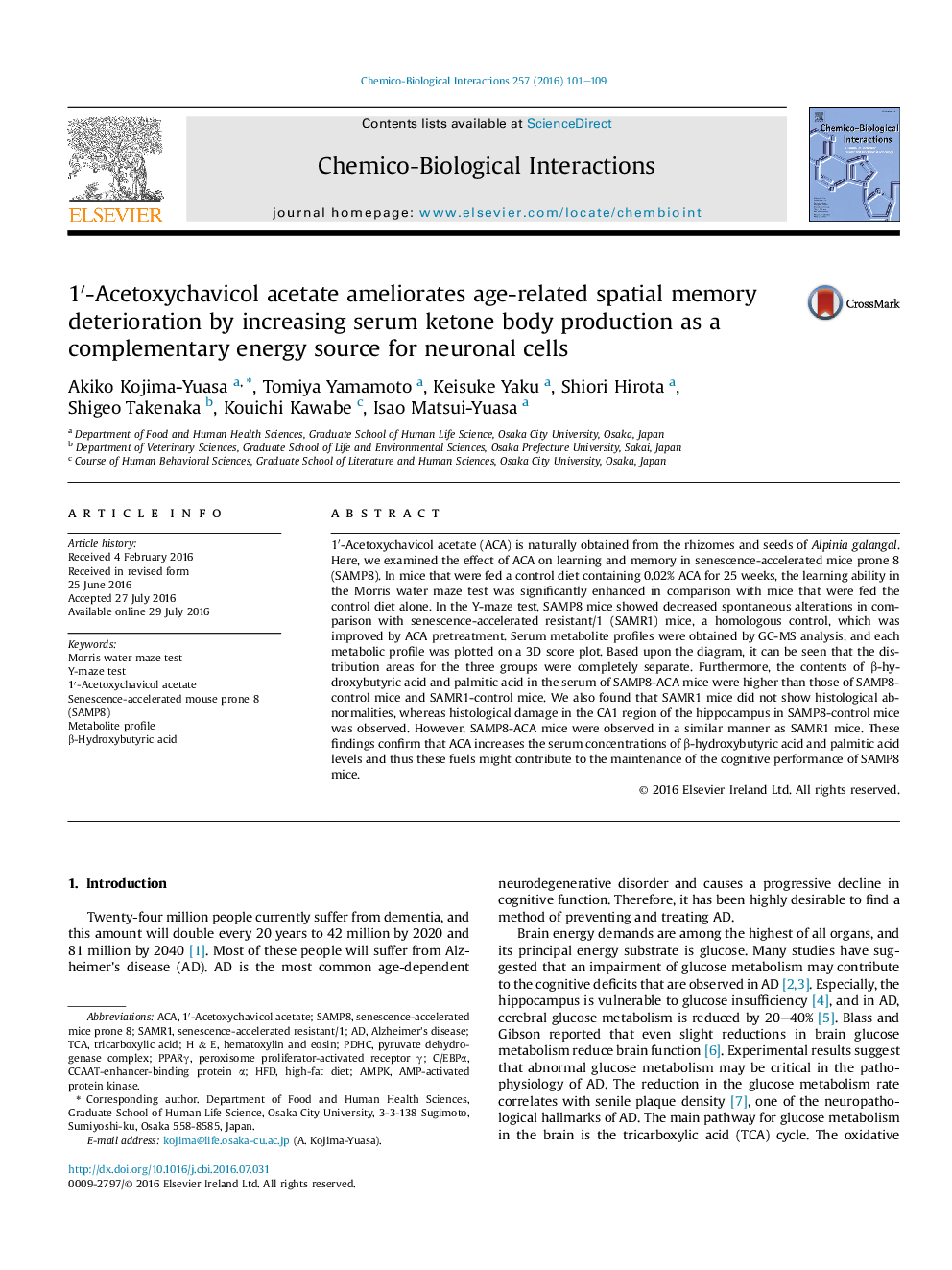| Article ID | Journal | Published Year | Pages | File Type |
|---|---|---|---|---|
| 2579803 | Chemico-Biological Interactions | 2016 | 9 Pages |
•1′-Acetoxychavicol acetate (ACA) improves short- and long-term memory in SAMP8 mice.•Serum metabolite profiles were obtained by GC-MS analysis.•ACA increased the serum β-hydroxybutyric acid and palmitic acid.•ACA did not occur the histological damage in the CA1 region of the hippocampus.
1′-Acetoxychavicol acetate (ACA) is naturally obtained from the rhizomes and seeds of Alpinia galangal. Here, we examined the effect of ACA on learning and memory in senescence-accelerated mice prone 8 (SAMP8). In mice that were fed a control diet containing 0.02% ACA for 25 weeks, the learning ability in the Morris water maze test was significantly enhanced in comparison with mice that were fed the control diet alone. In the Y-maze test, SAMP8 mice showed decreased spontaneous alterations in comparison with senescence-accelerated resistant/1 (SAMR1) mice, a homologous control, which was improved by ACA pretreatment. Serum metabolite profiles were obtained by GC-MS analysis, and each metabolic profile was plotted on a 3D score plot. Based upon the diagram, it can be seen that the distribution areas for the three groups were completely separate. Furthermore, the contents of β-hydroxybutyric acid and palmitic acid in the serum of SAMP8-ACA mice were higher than those of SAMP8-control mice and SAMR1-control mice. We also found that SAMR1 mice did not show histological abnormalities, whereas histological damage in the CA1 region of the hippocampus in SAMP8-control mice was observed. However, SAMP8-ACA mice were observed in a similar manner as SAMR1 mice. These findings confirm that ACA increases the serum concentrations of β-hydroxybutyric acid and palmitic acid levels and thus these fuels might contribute to the maintenance of the cognitive performance of SAMP8 mice.
